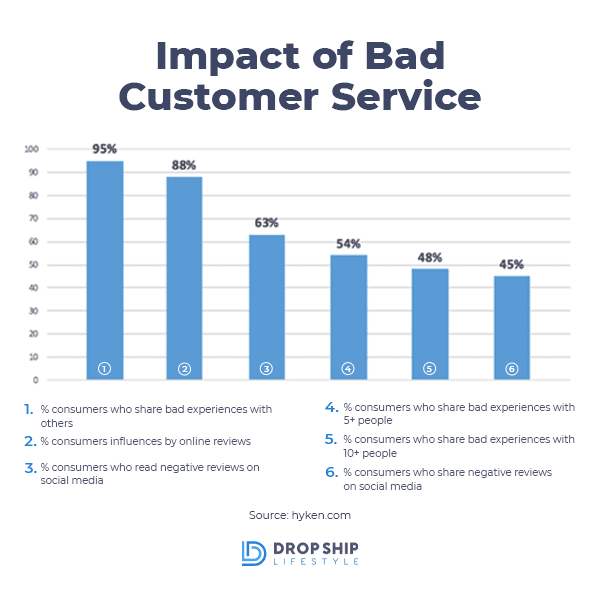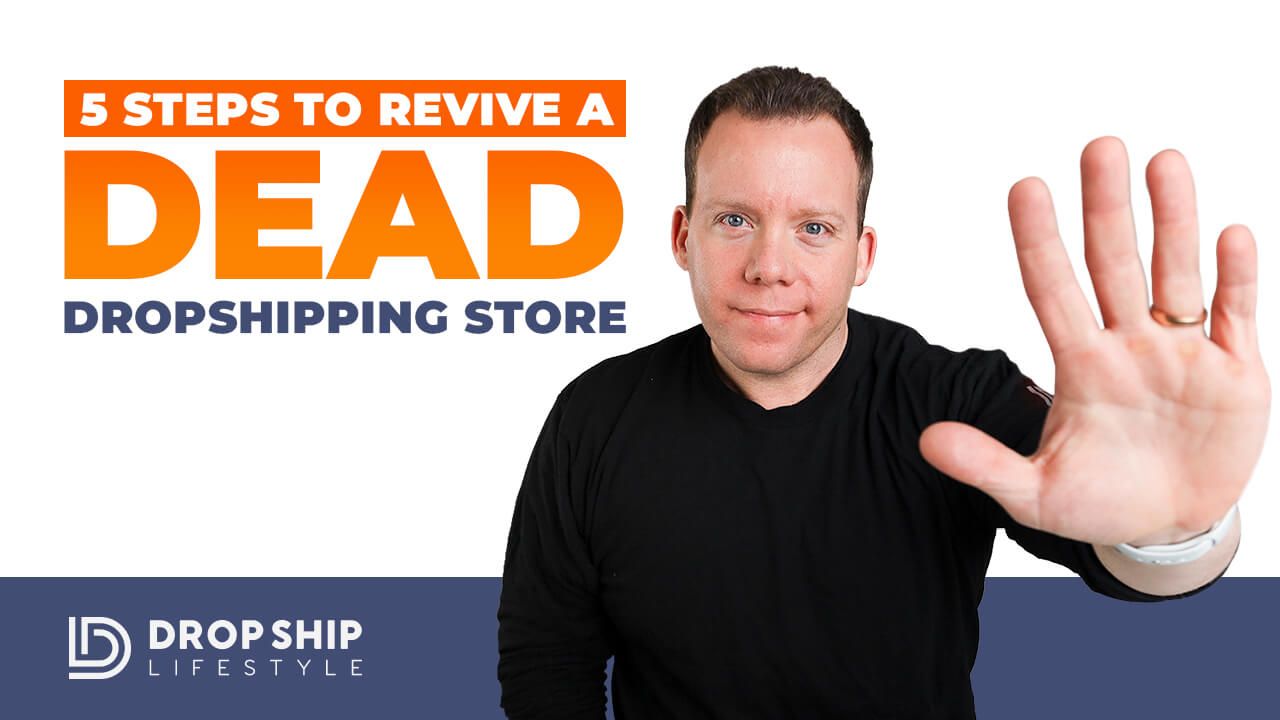Knowing how to revive a dead dropshipping store is an essential skill for savvy business owners. One of the main reasons dropshipping stores fail is that people often fall victim to a fixed mindset—especially once they start seeing results. However, this type of stagnation will usually cause traffic and sales to drop, leading to a dead dropshipping store.
Another reason you might need to revive a dead store is if you purchase a dropshipping business that’s for sale. Oftentimes owners will sell stores that were profitable in the past but are experiencing sales and traffic trending downward. While these failing businesses may come at a bargain price, they won’t be good assets unless you know how to ‘flip’ them.
Having said that, it’s almost always better to start your own store from the ground up or work on reviving your current business.
No matter what the reason, if you need to revive a dead dropshipping store, understanding the process will help you do so successfully. Let’s take a look at what causes dropshipping stores to die, as well as five steps to bringing your dropshipping store back to life:
What Causes Dropshipping Stores to Die?
As previously mentioned, a dying dropshipping store is usually caused by stagnation. However, there are two other common causes:

Whether the situations above were caused by you or a previous owner, it’s typically not worth trying to revive stores that are facing these scenarios. Instead, try pivoting and starting over—even if you decide to sell the exact same products.
#1 Document Your Baseline
Knowledge and data couldn’t be more important when you need to bring back your business. In order to understand how to move forward, you need to look backwards to see where you came from. This means you need to do a deep dive into the metrics of your past three months of sales. You need to create an organized document where you can see the following data in one consolidated location:
Once you document this data, you’ll have a useful and realistic overview of what’s really happening in your business. Then you’ll be ready to move on to the next phase.
#2 Evaluate Your BEST Three Months
The next thing you need to do is document your peak by evaluating and documenting the best three months of your business—regardless of how long ago that period might have been.
As you do this, you should look at how much traffic was coming in, and where that traffic was coming from. This will allow you to see what led to sales when the business was doing the best it ever was. Doing this will help you see what was successful, and can help you make a plan for the future.
It’s important to look at this data over a consistent three-month period rather than just picking a day or week when business was booming.
#3 Identify the “Fall-Off”
The beauty of operating in today’s world is the amount of data you have at your fingertips. Whether it’s Google Analytics, Google Ads, Facebook Ads, or Klaviyo, every tool you use tracks and stores crucial information you can dive into and inspect.

This data can help save your business if you know how to use it correctly. What you need to do is set the data range for the entire lifespan of the business. Looking at graphs that start at the inception of the business makes it glaringly obvious when things started to change.
When you see a steep line—the fall-off—it’s usually caused by some kind of error. For example, a fall-off could be caused by:
Oftentimes, you won’t even realize the consequences of these mistakes until you look at their consequences at the macro level.
As you dive into this quantitative research, you need to identify not only which ad campaign led to the fall-off, but also the ad set, and the specific ad inside the campaign itself. A useful tool to take advantage of is the “see history” button, which will show you the changes made on specific dates.
Keep in mind, that as you work through this step, you don’t need to start making changes. This part of the process is all about researching, identifying, and documenting. Don’t forget to look at every avenue your business generates sales through, including organic traffic.
#4 Consider the Qualitative Data
This step involves looking beyond the data to figure out what caused the fall-off in your business by thinking back on your personal life. Although you might not realize how changes in your own life impact your sales on a day-to-day basis, when you look back it’s much easier to see the real effects.
Take a look at these examples of things that could have led to problems in your business:
Once again, you don’t need to make any changes during this step, since steps one through four are all about gathering information. Including qualitative data in your evaluation will help you paint a clearer picture of what went wrong in your business, and will help you succeed in step five.
#5 Plan Your Comeback
Planning your comeback doesn't mean that you need to make a major announcement or start posting all over your social channels. Instead, you’re going to use the data you uncovered to make changes going forward.
You should look at what was happening at your peak to see what can be replicated. Also look at what led to the fall-off to see what you can change to prevent future slumps.
Sometimes, if you’ve noticed that your ad campaigns are performing worse and worse over time, the best thing you can do is re-build them from the ground up. Essentially, this will allow them to ‘re-learn’, so Google will gather new data about how your data converts.
Another thing you can do is to look at any errors that might be causing a decline in sales—and fix them immediately. Since you’ve already gone through the data-gathering phase, it won’t be difficult to zone in on problems. Just be sure to focus on both the quantitative and qualitative factors. If you don’t address and fix issues from every angle, you’ll likely see issues repeat themselves.
Although it can be frustrating, patience is key, and you can’t expect to see results overnight. Addressing your store’s issues in a slow and controlled way is the best strategy for long-term success. Setting weekly or bi-weekly goals can help you set realistic milestones.
If you’ve had success in the past—but let it slip away—following the steps above can get your business back on track. It takes time, dedication, and hard work to revive a dead dropshipping store. But it’ll be worth it once your store starts making you money and providing you with the life you’ve always wanted.



Hey Everyone,
As many of you already know I created Drop Ship Lifestyle after selling a network of eCommerce stores and then trying to find a community of other store owners to network with… What I found was a bunch of scammers who promised newbies they would get rich quick by following their push-button systems!
This led me to create a new community along with an online training program that shares how to build a REAL online business.
I’d love to hear what you think… it’s a 2.5-hour training designed to help you drop ship profitably… all for free.
Be sure to click here to check it out and send me your feedback!
If you go through the “How To Start & Grow A Hyper-Profitable Online Store” webinar and still have questions just contact me and I will help you out